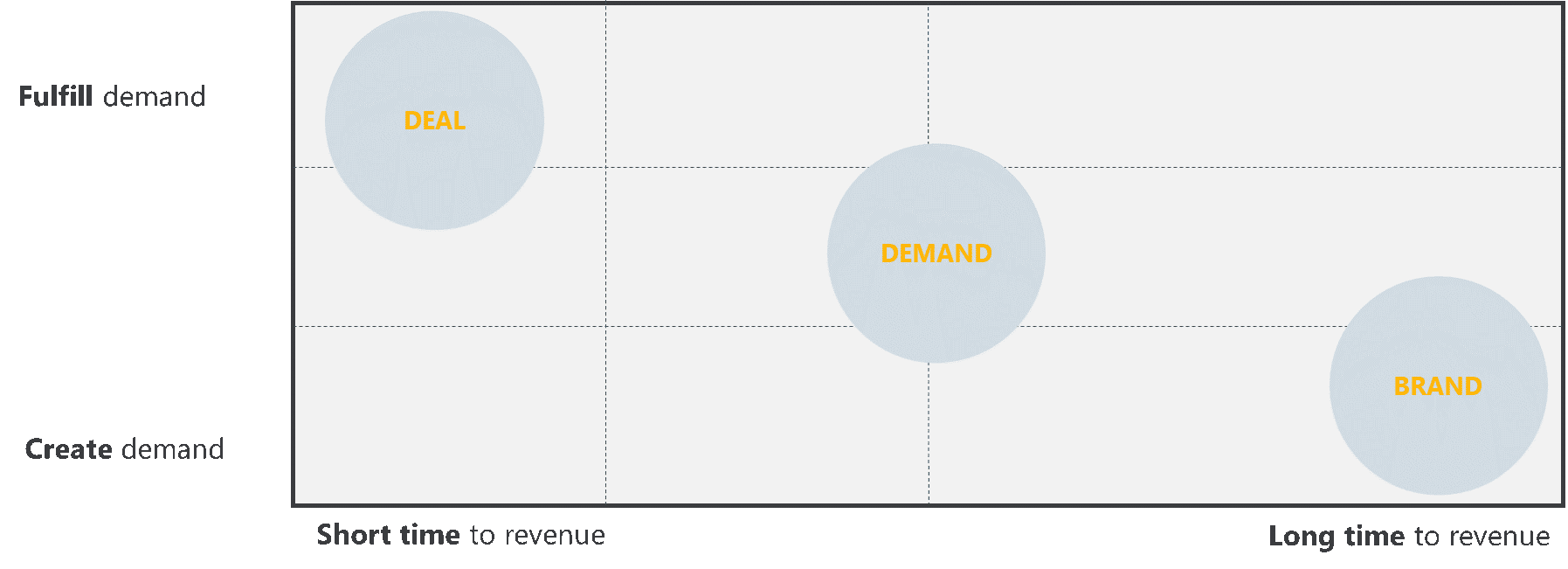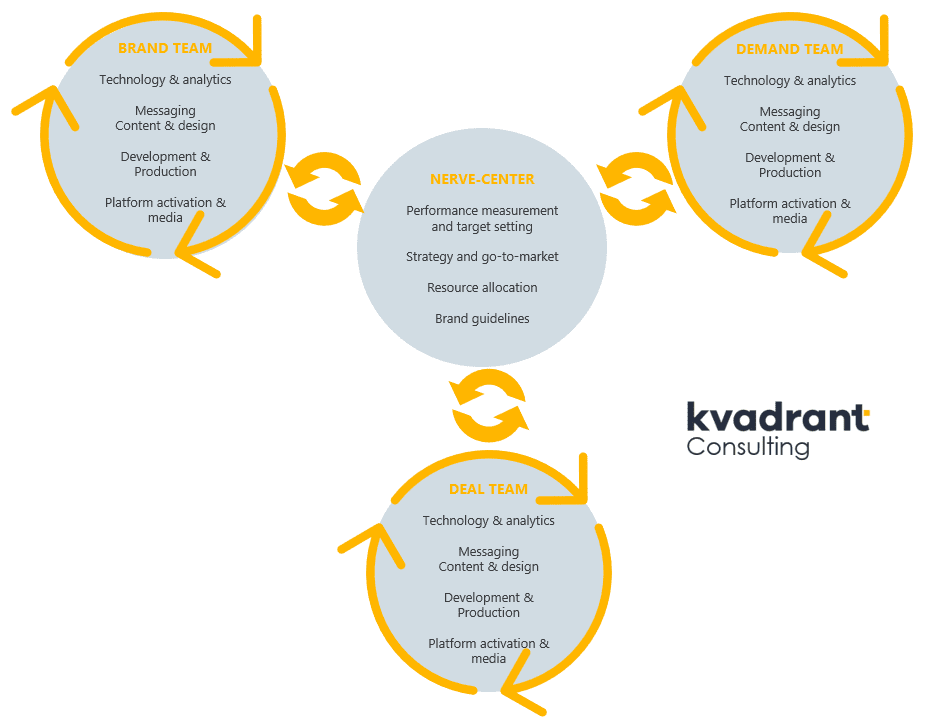How marketing can organize around the three imperatives for revenue marketing?
While Marketing in BTB companies should be going into a golden age due to the digitization of the buyer journey and the declining efficiency of classical sales tactics such as cold calling, many marketing organizations are struggling with a lack of internal reverence, budget cuts, and a constant pressure to “prove” the value they create. While this is often unfair, it does point towards challenges with the current way of operating for many marketing organizations:
1. A skewed focus on either brand communication (PR and image-level brand campaigns) or sales support (creating sales materials such as fact sheets, presentations). Such focus under-utilizes the full spectrum of marketing´s ability to create value across the end-to-end buying process
2. Accountability is too fuzzy and there is a lack of shared objectives. This results in the inability for people inside the marketing department to express the greater goal of their activities and how their efforts translate into business value
3. Over-reliance on time-boxed product launch campaigns leads to marketing being positioned as an order-taker from Sales and Product departments, hampering marketing’s ability to drive customer-centric programs in a fast pace
The question is, how can the Marketing organization take control of its fate and become a strategic asset?
The answer lies in Marketing’s willingness and ability to go back and realign its activities towards what truly matters to the business.
The three imperatives of revenue marketing in BTB
In order to own the revenue generation, Marketing needs to take a full funnel approach and start by understanding how customers buy and map that onto your activities. While Marketing has historically had a say in the very early and late parts of this process, we believe that to truly add value, Marketing must play an instrumental role in all parts of this process.
At its essence, it is not so far from what Marketing always have (or should have) done, but too often Marketing has been reduced to only fill pockets of this process – and often played a reactive role. By striking a balance between the three engines, marketing can both cultivate and capture demand, working on the long- and short-term simultaneously:
Exhibit 1
Brand, Demand, Deal: The Three Engines of Revenue Generation

Unpacking Brand, Demand and Deal-making
While each of these imperatives have activities that overlap, requiring a level of coordination, they are largely independent, and can run in parallel and support different stages of the buyer journey:
Exhibit 2
1. BRAND
Outcome:
Build brand awareness and differentiation to secure future sales volumes and increase willingness-to-pay
Objectives:
- Define and govern brand platform, including brand positioning, architecture & identity
- Anchor brand platform internally through training, materials and communication
- Drive the brand externally through image communication, PR and thought leadership
2. DEMAND
Outcome:
Generate leads and pipeline value
Objectives:
- Capture leads through valuable content, trials or offers
- Nurture leads through tailored communication to drive the lead forward in the buying journey
- Qualify leads through scoring based on “fit” and behavior as well as tele-qualification by Inside Sales
3. DEAL
Outcome:
Increase deal velocity, win rate and deal size
Objectives:
- Catch intent signals and intelligence to help sales have more timely and qualified conversations
- Support all types of sales meetings through valuable content, customer-specific research and tailored value propositions
- Target and prime the extended buying center (indirect and direct decision makers) through digital channels on specific deal opportunities
The nerve-center: Ensuring the direction setting, coordination and prioritization across the engines
To avoid misalignment, inefficient use of resources and to enable distribution of learnings and insights across the organization, the Brand, Demand & Deal teams need to be supported by a “nerve-center”. This entity sets the overall direction, monitors performance and allocates resources. The nerve-center’s driven activities are often:
- Go-to-market, marketing strategy and value propositions
- Tech-stack blueprinting
- Governance and operating model design
- Budget and resource allocations
- Prioritization of hero campaigns and major bets on themes or products
- Hiring and capability building
Exhibit 3
The Nerve-Center of The Three Revenue Engines

A new organizing model for modern marketing
Bringing it all together into a unified framework requires that you look at the whole operating model as a multi-speed engine. We see three crucial steps that you need to cover to operationalize this framework:
1. Designing the operating model:
Which activities do you insource, and which do you outsource?
What is the role of respectively central and regional functions?
2. Set agile cross-functional teams to own each engine and related outcome:
Which competences are needed in each team?
How are these competences filled by individual roles?
3. Describe and hardwire operating rhythm:
Macro: Which types of meetings and with what frequency exists between teams and the nerve-center?
Micro: What is the cadence (sprint-based and iterative) inside of each team to drive the needed activities most efficiently?









